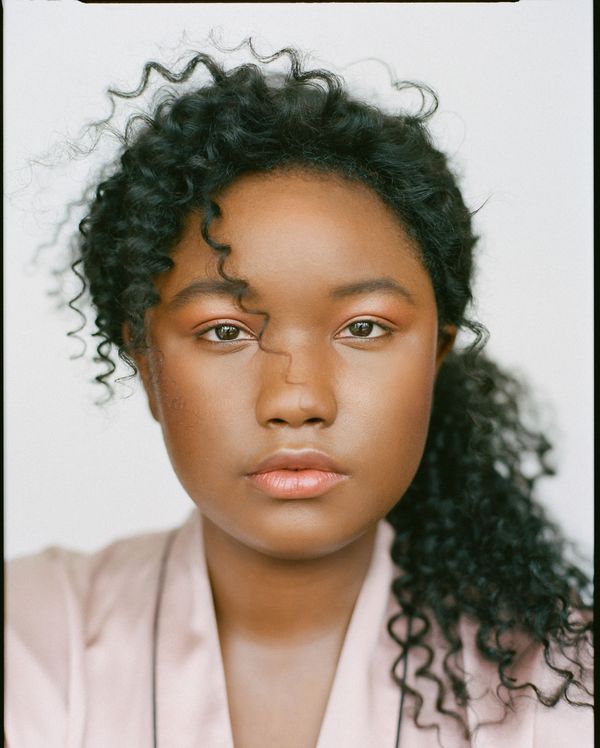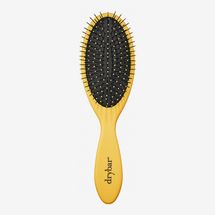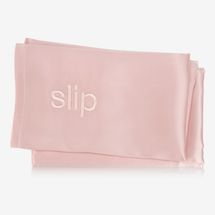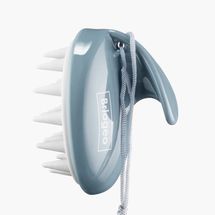How Do I Get My Hair To Grow Faster
15 Ways to Convince Your Hair to Grow Faster and Longer

Low ponytails help. Photo: Heather Hazzan
Really long hair is beautiful and all, but it takes a lot of effort. Either you shell out for removable fake hair, or you undertake the painstaking process of growing your own out. The latter is more cost-effective, but requires a lot of willpower and patience — both of which are often in short supply.
If you want to finally be rid of your bowl cut or grow an all-natural ponytail that skims your butt while in self-isolation, there are a few things you can do to help the process along. First, mentally prepare yourself do a lot of waiting; even more than you already are. Seriously — hair grows up to half-an-inch a month max, and that's if it's in prime condition. It's gonna take a while. Next, follow these 15 hair-growth tricks to nudge those leisurely hair follicles in the right direction.
Let's get this one out of the way first: Yes, trims sound counterintuitive and eating a spoonful of Jif every day seems like it'd be more effective, but you should continue to trim your hair sometimes. Trims get rid of accruing damage and the split ends that end up screwing you over in the long run.
Every eight weeks or so is the general benchmark, but it doesn't need to be a strict, recurring appointment. Just keep an eye on your ends, especially if you have a coarse texture, or heat-style or color often, and make sure your stylist is only taking off what's necessary when you see them — ask for a dusting (a baby trim)!
The secret to maximizing the hair-growth process is babying your hair at all times, including in the shower when its wet and vulnerable. "Use a very gentle, naturally based cleanser," says Dr. Dominic Burg, a trichologist and chief scientist at Evolis Professional, "and avoid things like SLS and SLES, parabens, and silicones, which is often seen as 'dimethicone' on labels." These harsh ingredients can build up on your scalp, clog your hair follicles, and sabotage your grand hair-growth plan, so go with something effective yet non-stripping, like the formulas below.
After you're done squinting at labels, consider spending some time apart from cleansing products if you tend to shampoo a lot. That squeaky-clean feeling may mean you're stripping your scalp and hair of its natural oils, which can lead to brittle hair and breakage, and leave you frustrated that your hair has been the same length for months.
Leave it be! Photo: Heather Hazzan
A hair-growth journey is an excellent excuse to treat yourself to a quality leave-in conditioner, an Audrey Hepburn–approved pre-poo conditioner, a luxurious hair mask, or just an upgrade to your usual conditioner. Anabel Kingsley, trichologist at Philip Kingsley, says the added moisture in these treatments helps plump the hair shaft, improving elasticity and strength over time, which means less breakage and more length retention for you.
Are you still doing that towel thing? It's very fun to flip your head over and rise with a chic turban of sorts, but the combo of twisting, tension, and fabric-rubbing on super-fragile wet hair is not great for hair growth. Try swapping your usual towel for a gentler microfiber hair one (no rubbing, just blotting), and if you have curls, try the cotton T-shirt plopping method. If you're really hard-core, try drying your hair with nothing but air.

If you need to brush your hair, do not employ the Marcia Brady 100-stroke method. Only brush your hair gently when you truly need to, and make sure it's with a gentle brush. "Opt for one with rounded, plastic prongs and a vented, cushioned base," Kingsley advises. Whether you're brushing, combing, or detangling, always start from the ends and work your way up to avoid breakage and a disturbing Princess Diaries situation.

Beyond the gentle brushing, try to leave your hair alone as much as humanly possible. That means cutting down on hair-drying, flat-ironing, curling, chemically straightening, dyeing, teasing, baking it in the sun, and yes, even crimping. The less you alter it and mess with it, the more it can truly thrive.
Air-dry! Photo: Heather Hazzan
You can still style your hair, but avoid high-tension styles like these ponytails. Instead, stick to something relatively innocuous, like the low pony. Here are some low ponytails to put on your vision board and discuss with your hair later.
For the thousandth time, encouraging your hair to grow to impressive lengths means treating it like the fragile baby it is, so start sleeping on silk pillowcases to cut down on tangles, breakage, and damage, and preserve all your hard work from following the aforementioned steps. This step is a fun one because silk pillowcases feel really nice and are good for your face, too.

Burg admits this is probably the hardest tip to follow, but if you want your hair to grow, you need to calm the eff down. "Your body knows that your hair isn't essential to maintaining your life, like your heart, lungs, and brain are, so when your body is under stress, it will move any available nutrients and energy to those essential organs and away from your hair." If you're freaking out, you risk prematurely sending your hair follicles into the resting phase, which means any growth will proceed at a glacial pace while your body focuses on more important things.
One easy way to start mellowing out right this instant is by massaging your scalp. Forget all that "increasing blood flow to the scalp" rhetoric — it's actually the self-care part that helps with hair growth. "Scalp massage can boost mood and relieve the stress that has a negative impact on the hair-growth cycle," says Kingsley. The two most common methods are called effleurage (circular stroking movements) and petrissage (gentle kneading and lifting of the scalp). Kingsley advises you start at the front of your scalp and work your way back with "gentle yet firm and consistent pressure." Investing in a scalp massager can help turn this into a special little ritual, like when you roll your face.

Speaking of jade-rolling, both Kingsley and Burg agree that you should basically treat your scalp with the amount of care you treat your face, so give it a skin-care routine outside of shampooing. Avoid harsh physical scrubs and look for familiar ingredients like our good friends salicylic acid and alpha-hydroxy acids to gently remove dead skin cells. Also good: natural ingredients with anti-inflammatory and antioxidant properties, such as green tea, mangosteen, goji berries, rosemary, and lavender.
Vitamin gummies taste delicious and they probably won't hurt (unless you're trying to curb a sugar addiction), but don't put all your faith in them, either. "Hair-growth gummies, or any hair-growth supplement for that matter, have the potential to work, provided there is a nutritional need," Burg says. So if you're extremely stressed, having trouble chilling out, or on a restrictive diet of sorts, popping some supplements may make a noticeable difference.
If you're already maintaining a balanced diet with plenty of iron, B vitamins, vitamin E, protein (which, fun fact, is what hair is made out of), and zinc, then good for you. If you want to further optimize your grocery list for hair growth, you can find biotin in stuff besides vitamins, like nuts, eggs, leafy greens, avocado, salmon, and cauliflower. An iron deficiency is often responsible for hair falling out before it reaches its maximum length, so consider upping your intake via red meat (if you eat meat), dark leafy greens, and beetroot.
De-stress. Photo: Heather Hazzan
If you feel like you've done all the above but your hair only ever gets to a certain length, hair loss may be sabotaging you. Look at your part (is it wider?), your brush (is there way more hair in it?), and your low pony (is it way thinner?) If so, Burg says signs point to a build-up of a protein called FGF5. "The only job of FGF5 is to tell hair to stop growing and start resting, so too much of it means slower hair growth." In that case, you may need something more targeted to hair loss and possibly professional guidance.
Kingsley also flagged other suspects, including crash dieting, shock, and hormonal imbalances or changes that come with hypo- and hyperthyroid, menopause, pregnancy, and PCOS, for example. "Due to the nature of the hair-growth cycle, hair shedding usually occurs 6 to 12 weeks after the event that caused it," she warns, so reflect a bit on what's been going on in your life, consult a professional where needed, and re-strategize from there.
This article was originally published March 13, 2019 and has been updated throughout. If you buy something through our links,New York may earn an affiliate commission.
How Do I Get My Hair To Grow Faster
Source: https://www.thecut.com/article/how-to-grow-hair-faster.html
Posted by: clementoctisher.blogspot.com

0 Response to "How Do I Get My Hair To Grow Faster"
Post a Comment